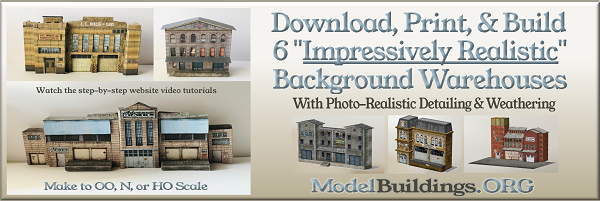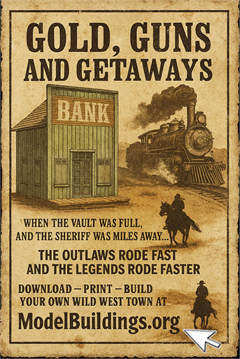Everything on model trains, model railroads, model railways, locomotives, model train layouts, scenery, wiring, DCC and more. Enjoy the world's best hobby... model railroading!
Adding an Elevated Line to Layout
Daniel models O scale and is confused with a project he is working on:
“I want to add an elevated line on my O scale layout. I purchased two sets of older trestles , 2110 & 110 sets. Both say can use for O Gauge. With plastic H shaped brackets there is no way three rail tubular track can be installed. What do I have? Have seen metal U shaped brackets on line. I would appreciate input and guidance from others.”
3 Responses to Adding an Elevated Line to Layout
Leave a Reply














Daniel, I can assume you are trying to lay your track in the open from support to support. They do make lock plates that hold each section of track together something like you said. I would suggest on your supports of your upper track that you use something such as plywood base mounted to the supports and then mount your track to that just as you might mount it down on your main plywood This also gives you a base for track roadbed and add some realism to your road bed. If you wish to make it look like a steel girder beam and look like a bridge then you have something to mount them to.
If this is what I understand you are doing then I suggest that. Also, Many times I see folks want to climb a track to go over another and then go right back down again. If you look at real railroads the upper track does not suddenly climb up to go right back down like our highway bridges do. Instead the track will go across the other track fairly level to get over another track or river. So this is an opportunity to have the upper level to hold a steady grade level and use trestles or bridges to support the track across what might be below.
from Newman Atkinson
The plastic H shaped clips (standard for 2110) and the metal squared off U shaped clips (standard for the older 110) work pretty much the same. The arms of the U or the posts of the H slide into the grooves on the top of the plastic trestle risers, which are basically the same in each set. Then machine screws are threaded through the track support (or “tie”, if you will) and into the clips. (On standard Lionel O-gauge track there were three ties per track section. O-72 had, I think, five.) The trestle support is aligned under the joint between two sections of track. Two screws (I don’t recall if they were 6-32 or 4-32.) go through the tie on one side of the joint and two through the tie on the other side. These screws then thread into the four holes of either style of clip. The tension on the screws keeps the trestle support from sliding. The tabs on the double crossbar of the H clip are designed to make it easier to keep the clip in place while sliding the posts into the trestle support. They clip onto the curved flanges of the tie, but are not sufficient by themselves to hold things together. With either the U-shaped clips or the H-shaped, it’s usually easier to start the screws through the ties of joined tracks and loosely into the clips, then slide the arms of the U or post of the H into the trestle support and tighten the screws to hold things secure.
The only place for connecting trestle supports to the track is at the track joints, for that is the only place where two ties come close together. The design was to have one trestle support at each track joint. That accomplished two things. Every track joint was supported and would not bend under the weight of the train, and the slope, while steeper than any real railroad, was manageable for the locomotives. Even at that slope my pre-1952 F diesel with “magne-traction” could pull only seven cars up the hill.
If you wish to recreate the feel of a 1950’s train set with an over and under figure 8, that’s great and this should do the trick. If, however, you want to more accurately model real railroads, Newman is spot on. On real railroads trestles were used not to create a hill, but to maintain a level road over valleys and canyons.
With some adaptation, these trestle supports could be used for more realistic modeling. Some kind of bridgework would have to be used under the track between supports. With long enough screws, the same attachment clips could be used.
Just a brief follow-up: The H clips may have been advertised as being capable of holding things together without screws. The tension created by clipping the tabs of the double H crossbar onto the tie flanges does create some resistance to movement. But when actually running trains, there is too much movement, so the screws are still needed to keep things stable.